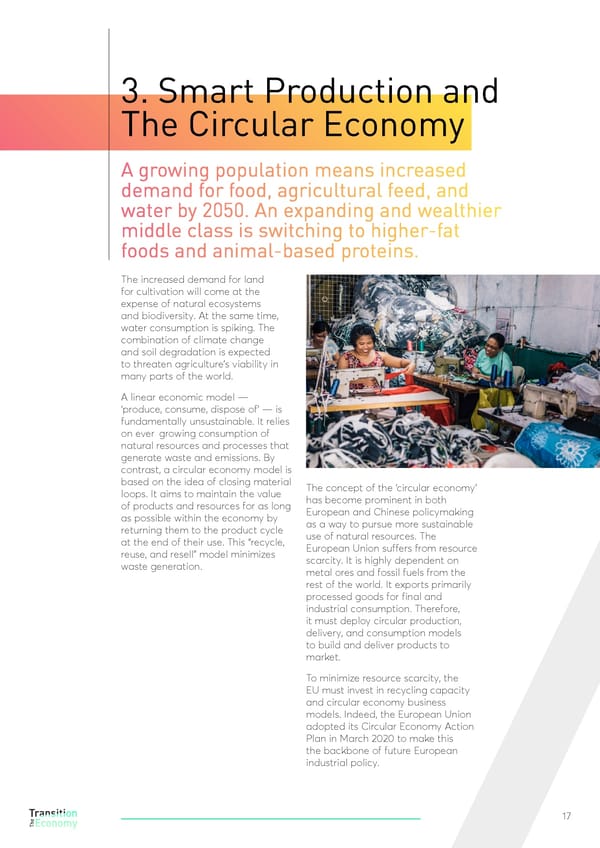3. Smart Production and The Circular Economy A growing population means increased demand for food, agricultural feed, and water by 2050. An expanding and wealthier middle class is switching to higher-fat foods and animal-based proteins. The increased demand for land for cultivation will come at the expense of natural ecosystems and biodiversity. At the same time, water consumption is spiking. The combination of climate change and soil degradation is expected to threaten agriculture’s viability in many parts of the world. A linear economic model — ‘produce, consume, dispose of’ — is fundamentally unsustainable. It relies on ever‐growing consumption of natural resources and processes that generate waste and emissions. By contrast, a circular economy model is based on the idea of closing material The concept of the ‘circular economy’ loops. It aims to maintain the value has become prominent in both of products and resources for as long European and Chinese policymaking as possible within the economy by as a way to pursue more sustainable returning them to the product cycle use of natural resources. The at the end of their use. This “recycle, European Union suffers from resource reuse, and resell” model minimizes scarcity. It is highly dependent on waste generation. metal ores and fossil fuels from the rest of the world. It exports primarily processed goods for final and industrial consumption. Therefore, it must deploy circular production, delivery, and consumption models to build and deliver products to market. To minimize resource scarcity, the EU must invest in recycling capacity and circular economy business models. Indeed, the European Union adopted its Circular Economy Action Plan in March 2020 to make this the backbone of future European industrial policy. 17
 The Transition Economy High Res Page 16 Page 18
The Transition Economy High Res Page 16 Page 18